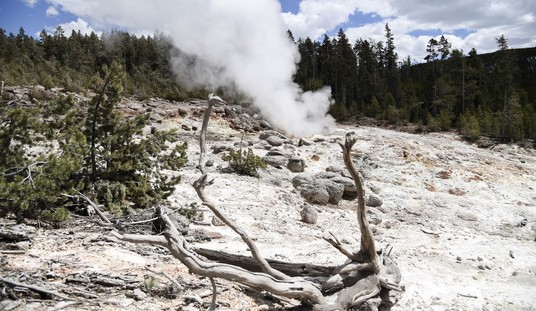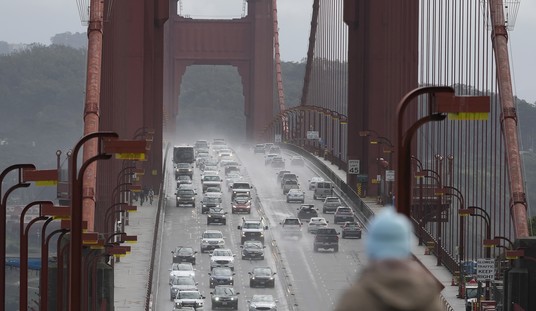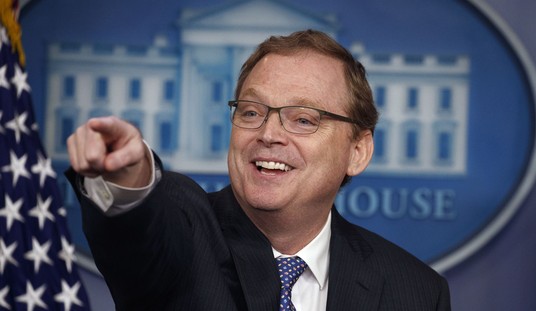“Exactly what did the White House know and when did they know it?”
It’s a pretty simple question and one that you would think is on the lips of every reporter that has the opportunity to ask a question of the Press Secretary or President Obama would be asking about the failed Solar company Solydnra which received over $500 million in loans from the U.S. Government.
I’ve tried to find a moment where this direct question was asked but so far have come up empty. Luckily the print media and the blogosphere are on top of it. As such, we’re finding out the answer without even having to hear Jay Carney’s voice.
Apparently, President Obama knew in late October that there might be problems, as his own advisors raised serious doubts about the process which had approved Solyndra for the over $500 billion in loans.
At a White House meeting in late October, Lawrence H. Summers, then director of the National Economic Council, and Timothy F. Geithner, the Treasury secretary, expressed concerns that the selection process for federal loan guarantees wasn’t rigorous enough and raised the risk that funds could be going to the wrong companies, including ones that didn’t need the help.
And:
In late October 2010, administration officials took their opposing views directly to Obama. In preparation, a memo was drafted by Summers, who remained wary of the program, and two others who were more supportive: then-energy advisor Carol Browner and Ron Klain, then chief of staff to Vice President Joseph Biden. The memo laid out their different concerns and options to fix a ‘broken process’ for getting loans approved.
After these concerns were raised, there was meeting to “streamline the process,” but little was done. President Obama had ample opportunity to try and deal with this failing program’s poor approval process and protect the American taxpayer from further exposure. He instead chose to continue charging down the path that has led us to our $500+ million loss.
In fact, they received more money after defaulting on the loans.
The U.S. Department of Energy learned in December that Solyndra was violating its federal loan deal, but the agency changed the loan terms to allow the solar company to continue receiving taxpayer funds, federal officials confirmed Wednesday.
It must’ve been great while it lasted for the executives at Solyndra. Of 18 companies that the U.S. Department of Treasury’s Federal Financing Bank gave out, Solyndra’s was the lowest. Even lower than Chris Dodd’s sweetheart mortgage, they received a 1.025% interest rate. On $500 million that is a staggeringly good deal. And as has already been mentioned, it couldn’t have been as a result of everyone feeling so secure in the financials. They were a mess and the process of approving them revealed that while still allowing the loan to move forward.
In order to make it more appealing to customers, the IRS jumped in on this deal of a lifetime and slashed the cost to consumers by offering a 30% tax deduction for Solyndra’s customers.
Solyndra, not only received a $500 million loan guarantee, it also got a favorable ruling from the IRS. According to “California Watch” — a unit of the Center For Investigative Reporting — the IRS decision gave Solyndra’s customers a 10-percent tax deduction and it was later increased to 30 percent.
And the timing of the ruling, just weeks before getting the stimulus loan, raises questions about whether the White House pulled strings for Solyndra, at other agencies.
How’s that for government intervention destroying competition? It’s unclear whether the IRS granted the deduction specifically to Solyndra’s customers or if it was related to their product, thus benefiting competitors, but what is clear is that the government was quite determined to cut every cost imaginable for Solyndra. One presumes they did this to create the appearance of success where none existed.
With all of the fancy footwork going on to make Solyndra look good, my original question stands: “Exactly what did the White House know, and when did they know it?”
Merely looking at the evidence would seem to indicate that they knew quite well how dangerous of a position Solyndra was in. By fall of last year, not only did they know that the vetting process was broken, not only did they know that George W. Bush’s administration had turned the loan down in ’08 citing concerns of financial stability, but their actions seemed to indicate that they were doing everything in their power to force that instability to change short of the one thing that a business person would’ve known instinctively to do: stop throwing good money after bad.
During the Dot Com boom, one of the pieces of evidence that the bubble was in danger of bursting had to do with extravagant spending, lavish offices, and blowing through money with reckless abandon that was symptomatic of many companies that had received investment. For Solyndra, the signs were there, but apparently no one in Barack Obama’s inner circle had dealt enough with the situation in the 90’s to read the writing on the wall. That, or they knew what was happening and just ignored it.
When it was completed at an estimated cost of $733 million, including proceeds from a $535 million U.S. loan guarantee, it covered 300,000 square feet, the equivalent of five football fields. It had robots that whistled Disney tunes, spa-like showers with liquid-crystal displays of the water temperature, and glass-walled conference rooms.
And
“The Plant Features 19 Loading Docks, Four Electric Car Charging Stations In The Parking Lot And Landscaping Of Wild Grass And A Rock Garden.
Even employees could see there were problems:
Former employees of Solyndra, the shuttered solar company that exhausted half a billion dollars of taxpayer money, said they saw questionable spending by management almost as soon as a federal agency approved a $535 million government-backed loan for the start-up.
And
After we got the loan guarantee, they were just spending money left and right,” said former Solyndra engineer Lindsey Eastburn. “Because we were doing well, nobody cared. Because of that infusion of money, it made people sloppy.
Even the mayor got in on the action:
There was available space that we talked about with them,’ Bob Wasserman, Fremont’s mayor, said in an interview. ‘It was their decision that they needed a new building. Was that a good decision? It didn’t turn out to be.
Real estate agents too:
Commercial real-estate agents in the region wondered why a new factory was being built in the Silicon Valley region, the epicenter of some of the priciest real estate in the country, where most new construction consists of office space.
“There hasn’t been a factory or warehouse building built in Silicon Valley in well over 10 years,” Jeff Fredericks, managing partner at Colliers International in San Jose, said in an e-mail.
All of these onlookers were able to determine what somehow evaded President Obama if it is to be believed that he was as taken aback as anyone else at the bankruptcy.
So maybe the administration didn’t realize a few things happening an entire country away? Who can blame them, right? You can’t expect them to pay for people to be out there enough to know what’s going on for a measly half a billion dollars in taxpayer money.
But the problems were right there on their doorstep as well.
As noted above, Solyndra defaulted on their loan in 2010, in violation of their agreement.
The failed solar-panel maker, which is under numerous criminal and congressional investigations, ran so short of cash in December 2010 that it was unable to satisfy certain terms of its U.S. loan agreement, these people said. The agreement required Solyndra to provide $5 million in equity to a subsidiary building its factory but cash-flow problems prevented those payments.
It would be pretty incredible if the White House claimed to not know of these problems in 2010. Would that information really have been withheld from President Obama even as he was allowing more money to be thrown in while tossing aside the first creditor rights of the taxpayer?
The company’s financial problems prompted the Energy Department early this year to allow it to reshuffle its debt. Under the arrangement, private investors agreed to provide a new $75 million loan and won the right to be paid ahead of the government if the company was liquidated.
It would be equally difficult to believe that the White House was unaware of the pitfalls inherent in restructuring the loan this way.
New records obtained by The Washington Post show that some federal reviewers warned internally earlier this year that it would be far cheaper for the government to allow Solyndra to shut down and sell off its assets, rather than to restructure the deal and bet on the company recovering.
And
A Preliminary Estimate By The Office Of Management And Budget In January Showed That Restructuring Solyndra Could Cost Taxpayers Up To $168 Million More Than Liquidation.
OMB staff members had warned that the Energy Department’s restructuring of Solyndra’s loan might be throwing good money after bad, other e-mails show, and could cost taxpayers $168 million more than if Solyndra had liquidated in January.
So here’s what we can say for sure about who knew what when:
- The employees knew something was up as far back as when the original money was given to the company.
- The mayor knew that they were making questionable spending choices in his town when they first picked their location.
- The local commercial real estate industry knew that they had made an expensive choice that hadn’t been made by private investor funded startups in over a decade.
- Obama’s advisors new there was trouble at least by October of last year when they raised their concerns, if not earlier.
- The Office of Management and Budget knew in January that restructuring was going to be a bad deal for taxpayers.
- Solyndra’s own executives knew as they warned the government that they were going to need more than $100 million more dollars just to stay afloat to 2012.














Join the conversation as a VIP Member